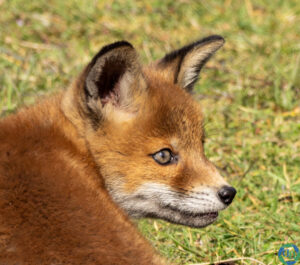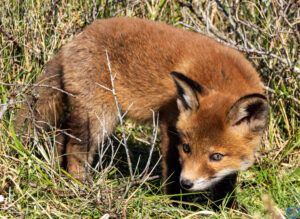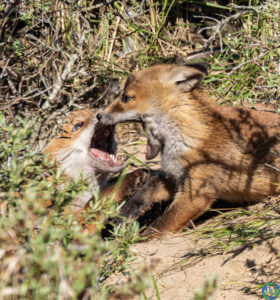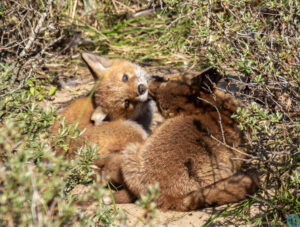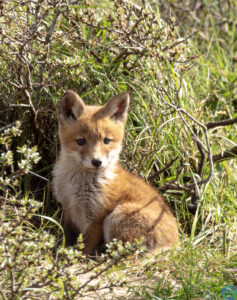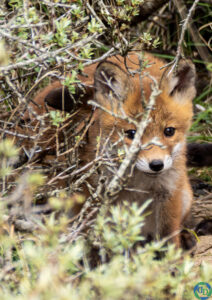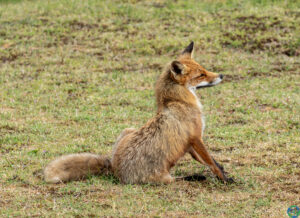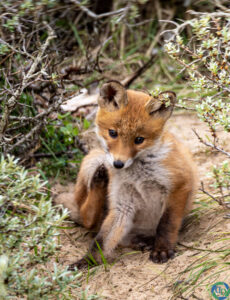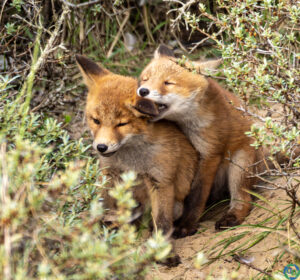Foxes!
We have in the Netherlands, after all. very many and beautiful natural areas, though. Around here we have the Twiske, the Purmerbos and also the Amsterdam Water Supply Dunes.
Many species of birds, squirrels and of course the fallow deer and foxes.
This page I will fill only with the foxes.
In March/April the young foxes are born and after several weeks they come out of the nest and sit among the bushes.
Dad and mom then wander around and put prey animals everywhere so the young have plenty to eat. If you look around the area you will see birds and such lying everywhere, which the youth can therefore eat quietly.
Just some info on the fox:
The scientific name of the red fox was published as Canis vulpes in 1758 by Carl Linnaeus.
The fox has a slender muzzle and pointed upright ears. The tail is long, thick and shaggy. It has a shoulder height of 35 to 40 centimeters and stands high on its legs. It has a head-rump length of 50 to 80 centimeters with a tail of 32 to 48 centimeters. It weighs six to 10, sometimes 15 kilograms. Males are generally larger than females.
A dominant rack (male fox) and a dominant nut fox (female fox) are accompanied by several nut foxes, probably from previous litters. A troop usually consists of 6 or so adults.
The young usually emerge from the burrow about 6 weeks after birth.
In the coming months, we will continue to visit the area and I will provide a report of growing up with photos.
Would you like to join us sometime? Just let us know and we’ll get you in tow!
Gallery
- OLYMPUS DIGITAL CAMERA
- OLYMPUS DIGITAL CAMERA
- OLYMPUS DIGITAL CAMERA
- OLYMPUS DIGITAL CAMERA
- OLYMPUS DIGITAL CAMERA
- OLYMPUS DIGITAL CAMERA
- OLYMPUS DIGITAL CAMERA
- OLYMPUS DIGITAL CAMERA
- OLYMPUS DIGITAL CAMERA
- OLYMPUS DIGITAL CAMERA
- OLYMPUS DIGITAL CAMERA
- OLYMPUS DIGITAL CAMERA
- OLYMPUS DIGITAL CAMERA
Want to know more about our dives? Feel free to look further on the site or send an email





